Phillips first appeared on my radar when I was checking out the results from the 2017 Sweaty Yeti Fat Bike Race in Ogden, Utah. The Sweaty Yeti is one of a handful of annual fat bike competitions in the Intermountain West, and one of a few that take place in Utah. In that event, Phillips raced in the the 40+ amateur class. Had he raced in the pro class, and maintained his pace, he probably would have reached the podium. His three lap time of 51:07 was only seconds behind the 3rd place pro finisher. And being the fierce competitor Phillips is, I would have hated to be that pro in 3rd place position—with Aaron Phillips on my ass. Phillips would have been stoked to stand next to the top pro that day—some nobody by the name of Justin Lindine.
Talk to people after a race, who you just raced hard against, and the discussion is more deep and beautiful than so many human interactions that we have on a daily basis. –Aaron Phillips
With the 2018 Sweaty Yeti right around the corner, Wasatch Rider decided to reach out to Aaron Phillips and learn more about this most-hated of riders.
Fast forward to this past November. Phillips was likely wondering who the hell I was when I cold-called him and asked if he would be willing to sit down for an interview. But he agreed, so we shared a cup of coffee at the Olympus Cove Einstein Bagels in Mill Creek.
Scott Cullins: Where did you grow up and how did you end up here?
Aaron Phillips: I grew in in Salt Lake City, Utah…in Mill Creek just a few miles from here.
I’m an academic, and we [academics] tend to be far flung to whatever vagaries the market takes us. I’m steadfastly determined I’m not going to take an academic job in a flat state where there are no mountains. I can’t do it. Until I die, I will be clinging to these mountains. I feel so deeply at home in these mountains. I think I can say I’m permanently tethered to these mountains.
Humans have this homing instinct that is deep. I swear, the mountains are characters to me. I go up mill creek canyon and I feel like I am among friends when I’m out with the pine trees and the squirrels.

Aaron Phillips trains for the Sweaty Yeti Fat Bike Race on the Neff’s Canyon Trail, December, 2017 – Photo © Scott Cullins
SC: So you’re a professor at the University of Utah, teaching Business Communications. How does Fat Biking affect your professional life or vice versa. How do they coexist?
AP: People need to create their own reality in life. It’s not about just getting a job. There’s a creative act of finding purpose and balance. For me at least there’s no gap between my professional and my personal self. The professional endeavor and athletic endeavor work seamlessly in tandem. I can’t imagine a day going to the office without scheming on my next ride…that has to be in my head in order to do my work.
It [this philosophy] really energizes me in my work life. Balancing your energy. We define ourselves as this creative entrepreneurial thing that’s how work works in 2017. There shouldn’t be a separation between who you are and what you do.
SC: So there is no worker Aaron and rider Aaron. There’s just one Aaron whose life includes both as part of a seamless fabric?
AP: Yeah. I love mountains. I love the trails. I am passionate about protecting open spaces and balancing development with recreation and wilderness. I do research on resource management and land management so every time I’m on the trails, I’m enacting some of those values.
SC: Can you describe your daily or weekly routine
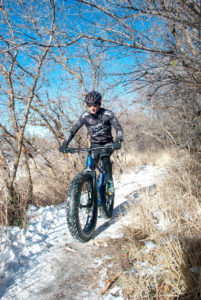
Aaron Phillips trains for the Sweaty Yeti Fat Bike Race on the Neff’s Canyon Trail, December, 2017 – Photo © Scott Cullins
AP: The philosophy of get up and move really works for me. I try to get some kind of workout in every morning, otherwise it’s difficult to feel ready for the day. It’s hard to go into intellectual labor without moving the body a little bit. So thats a big part of it…the anchor of morning workouts sometimes varies. Sometimes they’re strength, sometimes they’re a ride or endurance. A lot of times it’s at the gym, which is kind of sad given my need to be outside. Afternoons are hopefully about a little window of outdoor exertion.
On weekends I always try to get one long workout in as well as a good set of intervals. This varies throughout the year as goal events coalesce. So one long ride or long Nordic ski every week, and one set of good intervals..sometimes mixed with threshold work.
SC: What about diet?
AP: Diet is always a struggle for me. I’m continually searching for the perfect diet. It’s really difficult—especially in the winter when the body wants to pursue fats and pursue sugars. Fat is not so bad, but I have a problem with sugars.
I found more and more that a pretty good window of not eating every day—12 hours at a minimum—seems to allow for a better sleep—which is number one. Sleep is everything. And as a Masters athlete, recovery is important. (See more on racing nutrition here.)
On weekends I always try to get one long workout in as well as a good set of intervals. –Aaron Phillips
SC: You’re talking about intermittent fasting?
AP: Exactly. Compressed eating windows are ideal. I don’t usually have a particular pattern [schedule]. I just look at the hours. If my first meal at 10 am, then by 6 pm I should be wrapping it up.
As a result, I find that I’m amazed at my mental clarity and you can tell that you’re digesting better. Your immune health is going to be better, too.
And it [applying intermittent fasting] depends on how glycolytic your workouts are. With a really hard interval workout your going to have a need for glycogen replenishing. On days when it’s a hard effort, you have to go with what your body is asking for and sometimes being fasted for that whole time is probably not the best.
SC: Do you use any supplements?
AP: Yes. I use some Hammer products…especially Tissue Rejuvenator. The cellular breakdown associated with hard exercise, especially with anaerobic work is undeniable. So helping the recovery process through big doses of turmeric helps.
Other than that, I use probiotics…searching for that nice immune balance and making sure the gut flora is good.
SC: Tell me a little bit about your activities and passions outside of riding.
AP: I really enjoy reading, sort of broadly. As a professor—we trade in ideas—and I always want to be intellectually engaged. Writing as well—personally and for my job. I’m passionate about those things.
I love nordic skiing. I love the full body aspect of it. You really engage the upper as well as the lower body. And it’s weight bearing. We cyclists—if we’re just cycling—we have problems sometimes with bone density. So weight bearing exercise and trail running and skiing is a really important complement.
Nordic skiing I like in particular like becasue of the Metronymic affect of going one foot to another. There are some studies say the PTSD sufferers, and other people who have problems with the amygdala and the brain, are soothed by the rocking motion.
My ideal winter day is going out and ripping a couple fat bike laps then ripping a couple nordic ski laps then calling it a wonderful perfect day and maybe having a beer.
SC: Where do you tend to ride and ski?
AP: Good example for that—for being able to combine those two—is Round Valley. It’s a really nice area that is groomed for classic and skate skiing, and then a separate area where fat bike trails are maintained and ridden in by people. It’s a good way to balance user experience and minimize user conflicts which are a obviously, as our population increases in the Wasatch—more of an issue. I like to be someone who does all those sports becasue I understand the needs of all groups.
My ideal winter day is going out and ripping a couple fat bike laps then ripping a couple nordic ski laps then calling it a wonderful perfect day and maybe having a beer.
I’m so happy and thankful for mountain trails foundation, Utah open lands, and some of these other organizations that work really hard to keep places—places worth many millions of dollars—like Round Valley open space. Imagine the value of that land if you are a real estate developer. You must just salivate. Thank goodness it’s open space that we can use and enjoy for non-motorized pursuits.
SC: What about other groomed trail systems?
AP: Thin air cycles has been grooming in Draper (Corner Canyon) for a few years. When you get good conditions, and when they’ve done that amazing work of grooming, it’s like shredding the best powder. It’s fat biking that on the level with any other mountain biking.
SC: What’s your ideal social activity after achieving you professional and physical goals at the end of the week? How do you reward yourself?
AP: I do enjoy a good pale ale.
SC: What’s your favorite pale ale?
AP: This is such a dark horse but I love Desert Edge Brewery. And everyone makes fun of me cuz its all 3.2. beer But I love their Utah Pale Ale. I’ll put it up against, taste wise, pretty much any highpoint beers. And my friends are like, my God, your drinking 3.2 and Im all dude, the beer’s legit. And, also, I weigh 140 lb., so if I drink a couple of those (high points) I am like, done.
SC: What advice to someone considering getting into fat biking.
AP: If they are a powder hound, when the snow for skiing is not good it’s the best time for fat biking. I’ve also seen a lot of people bike packing who use fat bike. Fat bikes can be more of the Swiss army knife of bikes than you think. They seem like specialized bike they can be used in a lot of different circumstances: sand snow.
I can’t imagine a day going to the office without scheming on my next ride…that has to be in my head in order to do my work. –Aaron Phillips
SC: What are your goals in riding, other than the obvious one of of creating a lifestyle that makes you happy and allows you to thrive in ll aspects life?
AP: I try not to have big bulletin board goals that are dependent on many other variables, becasue it tends to be an invitation to continued failure.
A lot of times my goal will coalesce right at the start line or just before. It can be any number of things. You have your own effort metrics like, I want to see this heart rate, or I want to pass that person or get thru these next ten pedal strokes—depending on how dark things are getting—or I want to not quit in the next two minutes.
My goal overall in competing is to feel the unique and very inspiring feeling of human beings working together in this paradox of working together but also competing. I see competition as like, were all in the same page. We’re all doing this because we want to see what we can do and push our limits. So we’re all together in this and we’re bonding in a way that, for me, is this tribal and intense thing. Talk to people after a race, who you just raced hard against, and the discussion is more deep and beautiful than so many human interactions that we have on a daily basis.
We are built to fight and flight. We are built to kill and survive and to cooperate. And so racing is this coalescing of all of those different things at the same time. For me it is this intensity of experience that is drug-like in the best way. It is addictive but it feeds something that we all have in us, and yet it allows for a space where we’re all doing that and it’s socially acceptable to be going for your own self interest
I’ve also seen, in races, the most amazing displays of altruism. People sacrificing their races to help somebody out who fell and had a head injury. People helping each other out with tools. Ive had that happen to me. People sacrificing their tools in a long race where their never going to have access to that tool again becasue I won’t catch them, but their giving it to me to get back on my feet and go.
I’ve met some of the most incredible people and best friends competing and so I just feel passionate about it. Every time I line up for a race I think I’m super thankful and grateful that I’m able to do it…that I have the arms and legs to move and I get to breath hard with these people who, maybe don’t know, but I guarantee that I love them.
This story on Aaron Phillips is the first of many local rider profiles we have in the works at Wasatch Rider. If you know of someone who we should be writing about, please let us know.

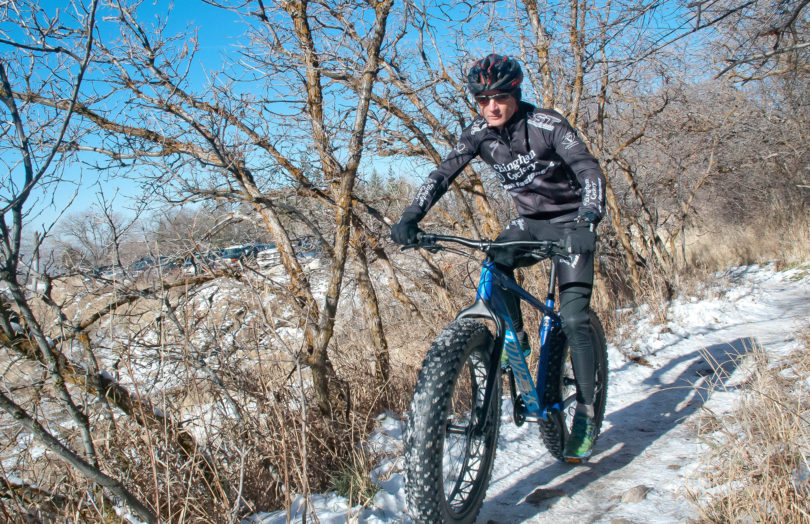
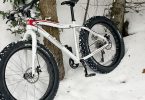
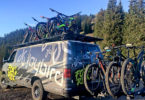
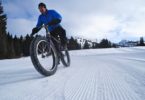
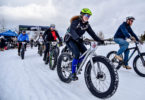
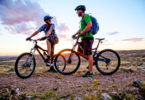
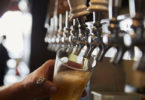
Leave a Comment